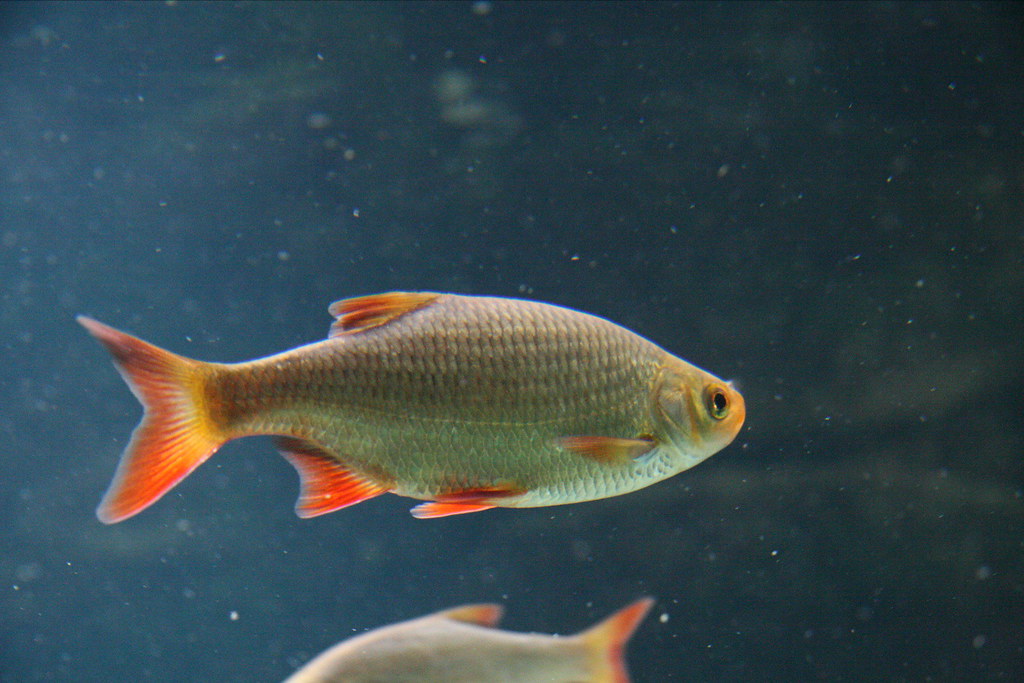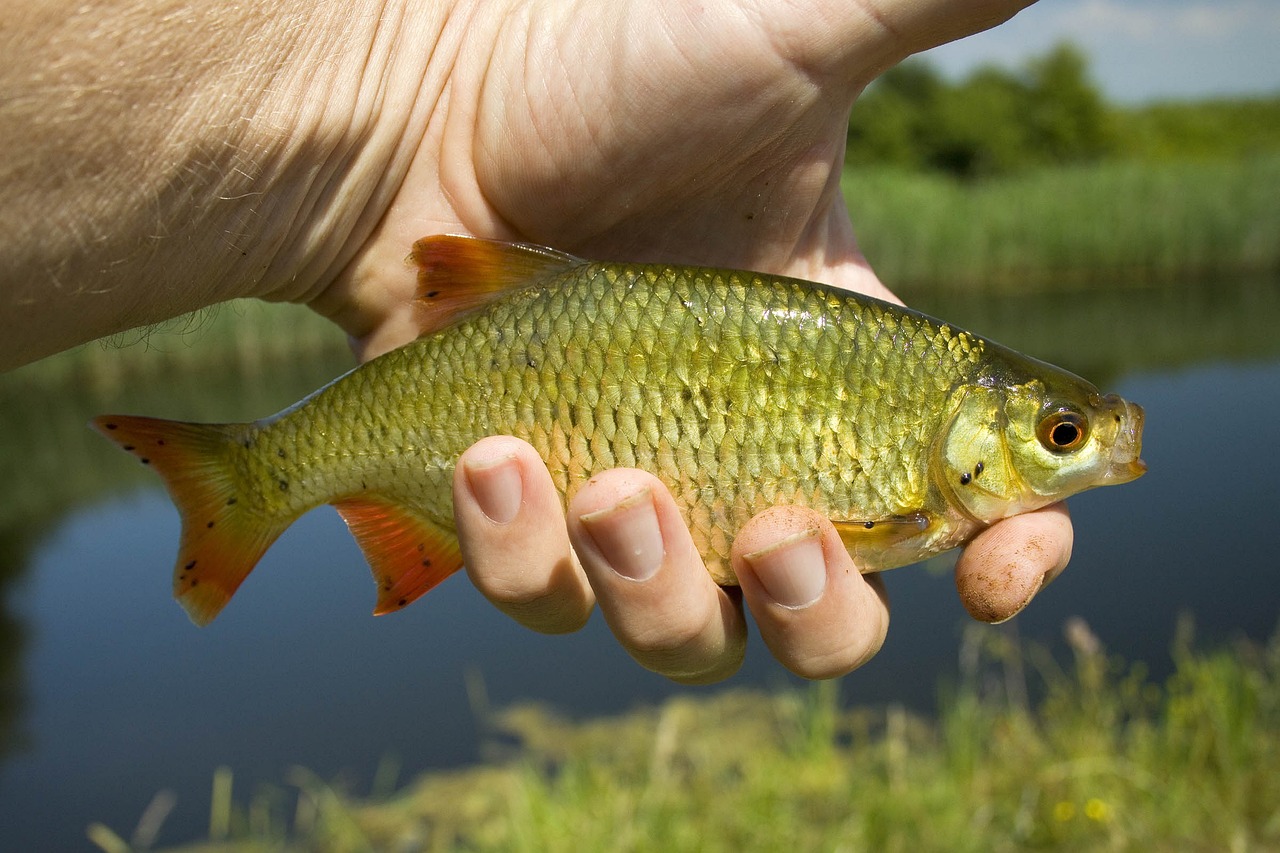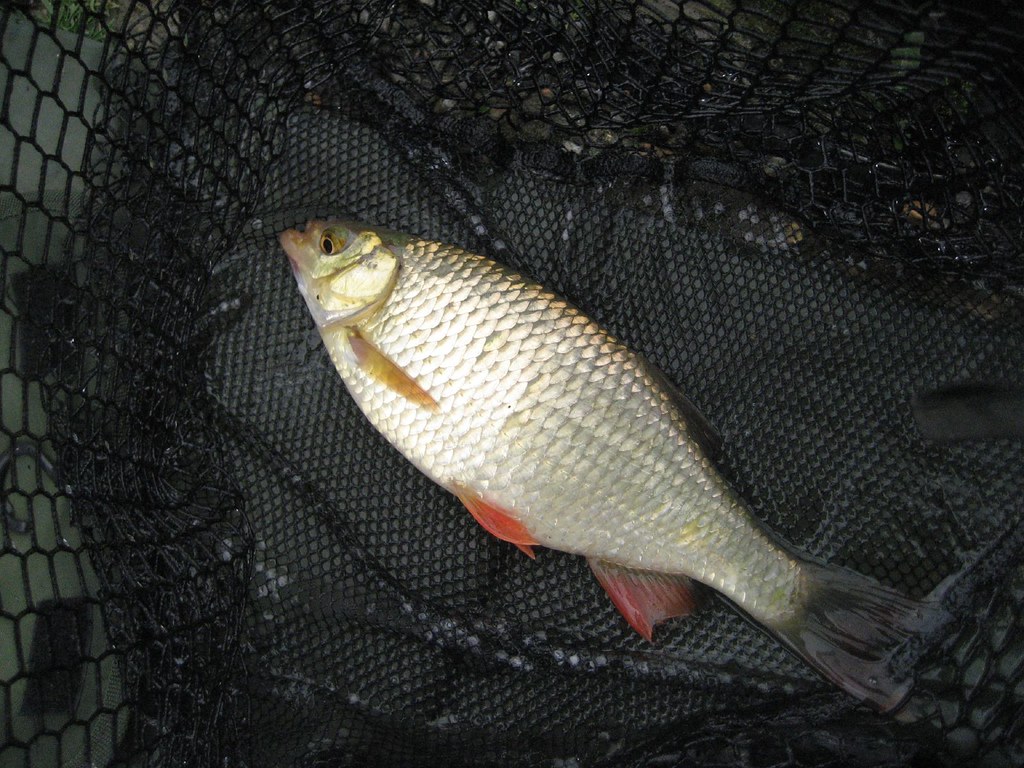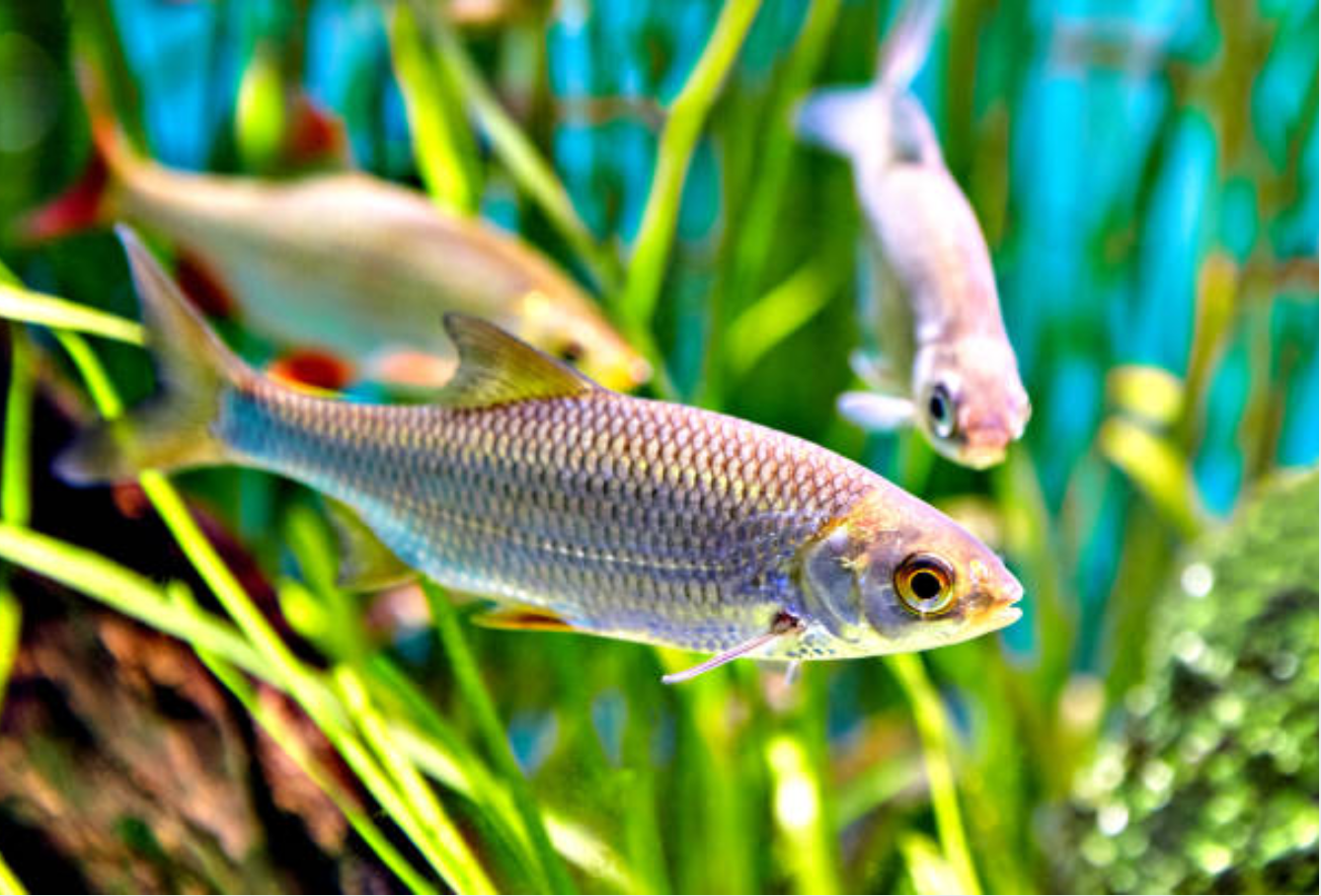Common rudd
Scardinius erythrophthalmus
This fish is a very distant relative of the Common Carp. The common rudd lives in groups, in fresh waters, such as lakes, ponds, or slow flowing waters. It prefers shallow places rich in aquatic plants. Adults generally feed on algae, or other aquatic plants, as well as small crustaceans.
The dorsal fin and pectoral fins are grayish with a reddish tint and all the other fins are bright red. This coloring of the fins is the feature that give its name in Romanian and other languages. Otherwise the skin of the rudd is yellowish green, with small, shinny scales that can easily be seen shining just under the water surface.
Males reach reproductive maturity at one year of age and females at one to two years of age. Spawning takes place depending on the water temperature, usually around 18 degrees Celsius.
This fish has been introduced artificially across the world and is considered an invasive species.

Photographer: Pepperminded

Photographer: Andy Ballard
Acest pește este o rudă foarte îndepărtată a crapului comun. Roșioara trăiește în grupuri, în ape dulci, cum ar fi lacuri, iazuri sau ape curgătoare lente. Preferă apele de adâncime mică, bogate în plante acvatice. Adulții se hrănesc în general cu alge sau alte plante acvatice, precum și cu mici crustacee.
Înotătoarele dorsale și pectorale sunt cenușii cu o tentă roșiatică, iar toate celelalte înotătoare sunt roșu aprins. Această culorare a aripioarelor este trăsătura care îi dă numele în română și în alte limbi.În rest, pielea roșioarei este verde gălbui, cu solzi mici, strălucitori, care pot fi zăriți cu ușurință strălucind chiar sub suprafața apei.
Masculii ating maturitate reproductivă la vârsta de un an, iar femelele ăntre vârsta de unu și doi ani.Depunerea icrelor are loc în funcție de temperatura apei, de obicei în jur de 18 grade Celsius.
Roșioara a fost introdusă artificial în multe țări din lume și este considerată o specie invazivă.
Roșioară
Scardinius erythrophthalmus
Rotfeder
Scardinius erythrophthalmus
Dieser Fisch ist ein sehr entfernter Verwandter des gemeinen Karpfens. Die Rotfeder lebt in Gruppen in Süßgewässern, wie Seen, Teichen oder langsam fließenden Gewässern. Sie bevorzugt flache, an
Wasserpflanzen reiche Stellen. Die erwachsenen Tiere ernähren sich im Allgemeinen von Algen oder anderen Wasserpflanzen sowie von kleinen Krebstieren.
Die Rückenflosse und die Brustflossen sind gräulich mit einer rötlichen Tönung, alle anderen Flossen sind leuchtend rot. Diese Färbung der Flossen ist das Merkmal, das der Rotfeder im Rumänischen und anderen Sprachen ihren Namen gibt. Ansonsten ist die Haut der Rotfeder gelblich-grün, mit kleinen, glänzenden Schuppen, die knapp unter der Wasseroberfläche zu sehen sind.
Die Männchen erreichen die Geschlechtsreife im Alter von einem Jahr und die Weibchen im Alter von ein bis zwei Jahren. Die Laichzeit hängt von der Wassertemperatur ab, die normalerweise bei etwa 18 Grad Celsius liegt.
Dieser Fisch wurde auf der ganzen Welt künstlich eingeführt und gilt als invasive Art

Photographer: Zimpenfish

Photographer: Grigorev Vladimir
Ce poisson est un parent très éloigné de la carpe commune. Le rotengle commun vit en groupe, dans les eaux douces, comme les lacs, les étangs ou les eaux à courant lent. Il préfère les endroits peu profonds riches en plantes aquatiques. Les adultes se nourrissent généralement d’algues ou d’autres plantes aquatiques, ainsi que de petits crustacés.
La nageoire dorsale et les nageoires pectorales sont grisâtres avec une teinte rougeâtre et toutes les autres nageoires sont rouge vif. Cette coloration des nageoires est la caractéristique qui donne son nom en roumain et dans d’autres langues. Sinon, la peau du rotengle est vert jaunâtre, avec de petites écailles brillantes que l’on peut facilement voir briller juste sous la surface de l’eau.
Les mâles atteignent la maturité reproductive à un an et les femelles à un ou deux ans. Le frai a lieu en fonction de la température de l’eau, généralement autour de 18 degrés Celsius.
Ce poisson a été introduit artificiellement à travers le monde et est considéré comme une espèce envahissante.
Rotengle
Scardinius erythrophthalmus
Try using these colors:
Remember, there are always more colors than you think you see!







